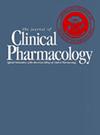Vemurafenib oral bioavailability: an insoluble problem.
IF 2.3
4区 医学
Q3 PHARMACOLOGY & PHARMACY
引用次数: 5
Abstract
In the current issue of Journal of Clinical Pharmacology, Ribas et al have presented critical data with respect to vemurafenib clinical pharmacology, andwe applaud them for their efforts. Vemurafenib (PLX4032) is a small molecule kinase inhibitor selective for the BRAF V600 mutation that is currently FDA approved for the treatment of patients with unresectable or metastatic melanomawith the BRAF mutation at a dose of 960mg twice daily oral administration. Given exciting preliminary efficacy data, vemurafenib moved through phase I to phase III trials relatively quickly, with limited investigation of the clinical pharmacology of the currently manufactured product prior to FDA approval. Specifically, the current Ribas study is the first formal investigation of the effect of prandial state on vemurafenib bioavailability and clearance. Nonetheless, it should be noted, that the FDA label indicates that vemurafenib can be taken without regard to food intake. Ribas et al have now provided a crucial study that begins to fill in this fundamental knowledge gap in vemurafenib clinical pharmacology. Within this study, the investigators employed a twoperiod, randomized, open-label crossover study to evaluate the effect of food on the clearance of a single dose of 960mg vemurafenib. Fifteen patients with metastatic melanoma harboring the BRAF were allocated to into one of two treatment arms. In one arm, patients took a single 960mg vemurafenib dose after an overnight fast, followed by a 10-day wash out period, and then another single dose in the context of a high-fat/highcalorie meal. In the second arm, the sequence was reversed, with patients taking their first dose in the fed state and the second dose 10 days later after an overnight fast. Following the two single dose periods, patients were maintained on standard continuous dosing of 960mg vemurafenib twice daily. Of note, for the fed-state evaluation, the high fat ( 50% calorie from fat), high calorie (800–1000 calorie) meal was consumed within 30minutes, and drug was administered 30minutes after the initiation of the meal. No food was allowed in either arm for four hours post dose administration. Despite the small study size, the authors demonstrate a convincing and clinically relevant impact of prandial state on vemurafenib pharmacokinetics. Notably, although the absorption with food was slower (Tmax prolonged from 4 to 8 hours), the mean maximum vemurafenib concentration (Cmax) doubled and the AUC tripled. Similarly, the point estimate of the geometric mean ratios of fed/fasting for AUC and Cmax are 4.7and 2.5-fold, respectively. Not surprisingly, those patients with the lowest fasted AUC had the greatest increase in AUC with food. Consequently, interindividual variability was dramatically reduced with food (eg, AUC CV% fasting 93–95% vs. 49–54% in fed state). Although there were no major differences in safety after the single-dose portions, it should be noted that no report on QTc is reported, and one patient reported tachycardia and another hypotension during fed state treatment. This study is the first critical examination of the effect of food on vemurafenib exposure and provides support for a significant positive food effect upon clearance of the medication. Vemurafenib is a Biopharmaceutics Classification System (BCS) Class IV compound, with both low aqueous solubility and permeability. Although the current formulation allows for increased absorption compared to the initial crystalline formulation, the physiochemical properties of vemurafenib are such that vemurafenib is essentially insoluble in water across pH ranging from 3 to 7. Furthermore, compounds with low aqueous solubility (BCS Class II and IV) are often associated with a significant food effect, a reality of many kinase The Journal of Clinical Pharmacology 54(4) 375–377 © 2014, The American College of Clinical Pharmacology DOI: 10.1002/jcph.277Vemurafenib口服生物利用度:一个无法解决的问题。
本文章由计算机程序翻译,如有差异,请以英文原文为准。
求助全文
约1分钟内获得全文
求助全文
来源期刊
CiteScore
5.10
自引率
3.40%
发文量
176
审稿时长
2 months
期刊介绍:
The Journal of Clinical Pharmacology (JCP) is a Human Pharmacology journal designed to provide physicians, pharmacists, research scientists, regulatory scientists, drug developers and academic colleagues a forum to present research in all aspects of Clinical Pharmacology. This includes original research in pharmacokinetics, pharmacogenetics/pharmacogenomics, pharmacometrics, physiologic based pharmacokinetic modeling, drug interactions, therapeutic drug monitoring, regulatory sciences (including unique methods of data analysis), special population studies, drug development, pharmacovigilance, womens’ health, pediatric pharmacology, and pharmacodynamics. Additionally, JCP publishes review articles, commentaries and educational manuscripts. The Journal also serves as an instrument to disseminate Public Policy statements from the American College of Clinical Pharmacology.

 求助内容:
求助内容: 应助结果提醒方式:
应助结果提醒方式:


